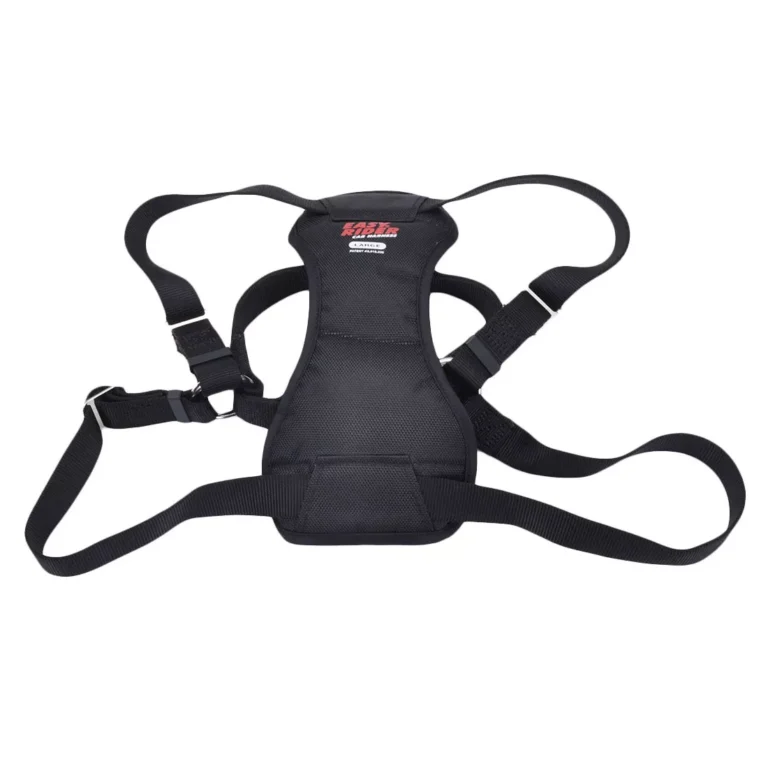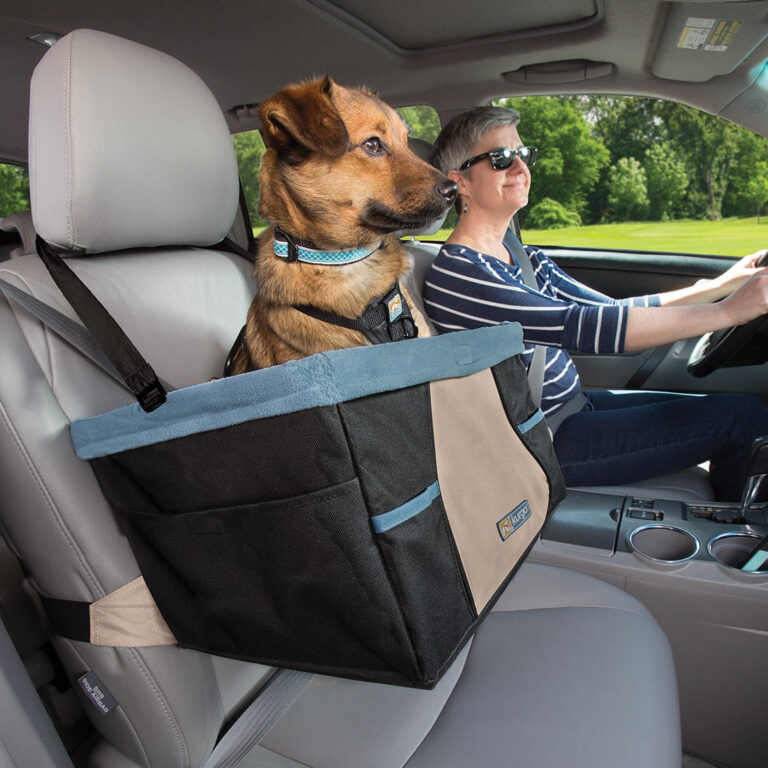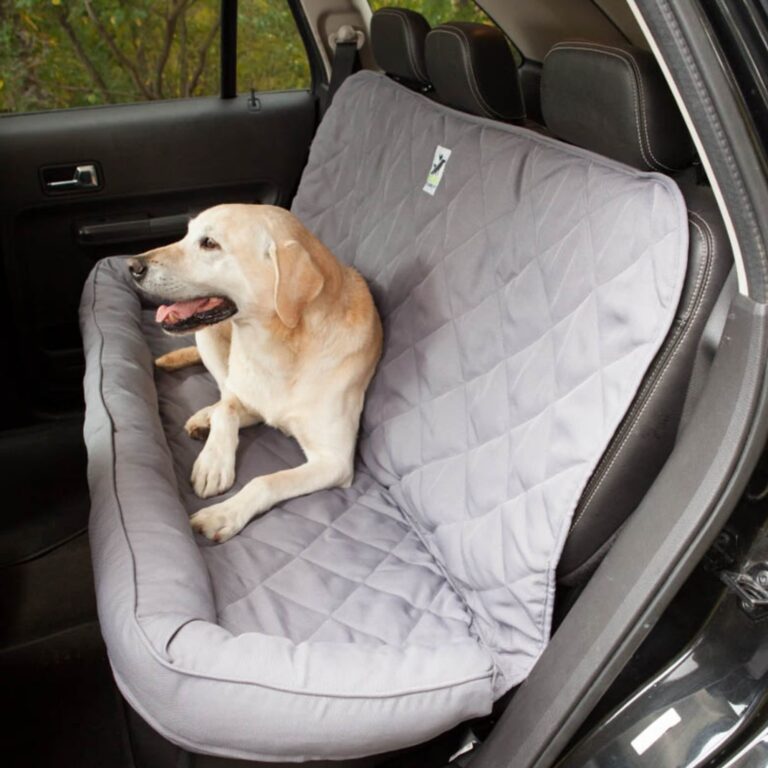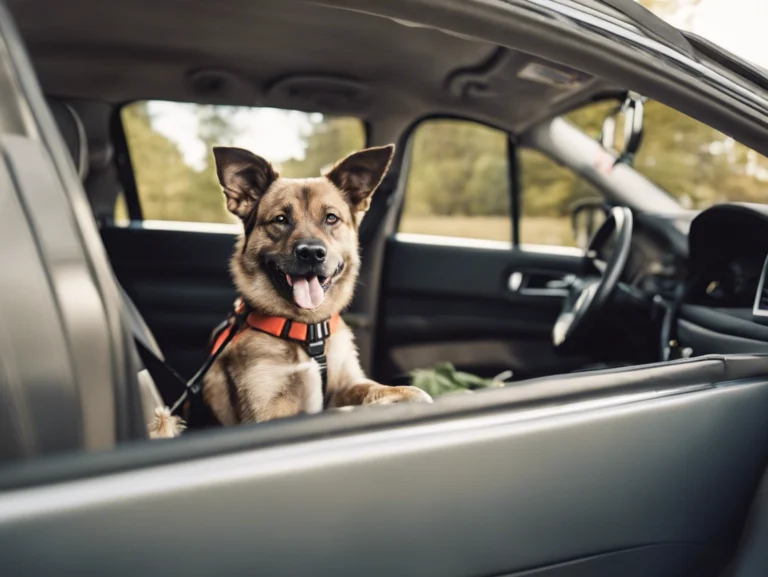Where Should a Dog Sit in a SUV? Ultimate Safety Guide
A dog should sit in the back seat or cargo area of an SUV for safety. Proper restraint is essential to prevent distractions and ensure a secure ride for the pet.
When traveling with a dog in an SUV, it’s crucial to consider their comfort and safety. Placing the dog in the back seat or cargo area with a harness, crate, or barrier will help minimize distractions for the driver and protect the pet in case of sudden stops or accidents.
By following these guidelines, you can ensure a safe and enjoyable journey for both you and your furry companion. Remember, safety first when traveling with pets in your SUV.
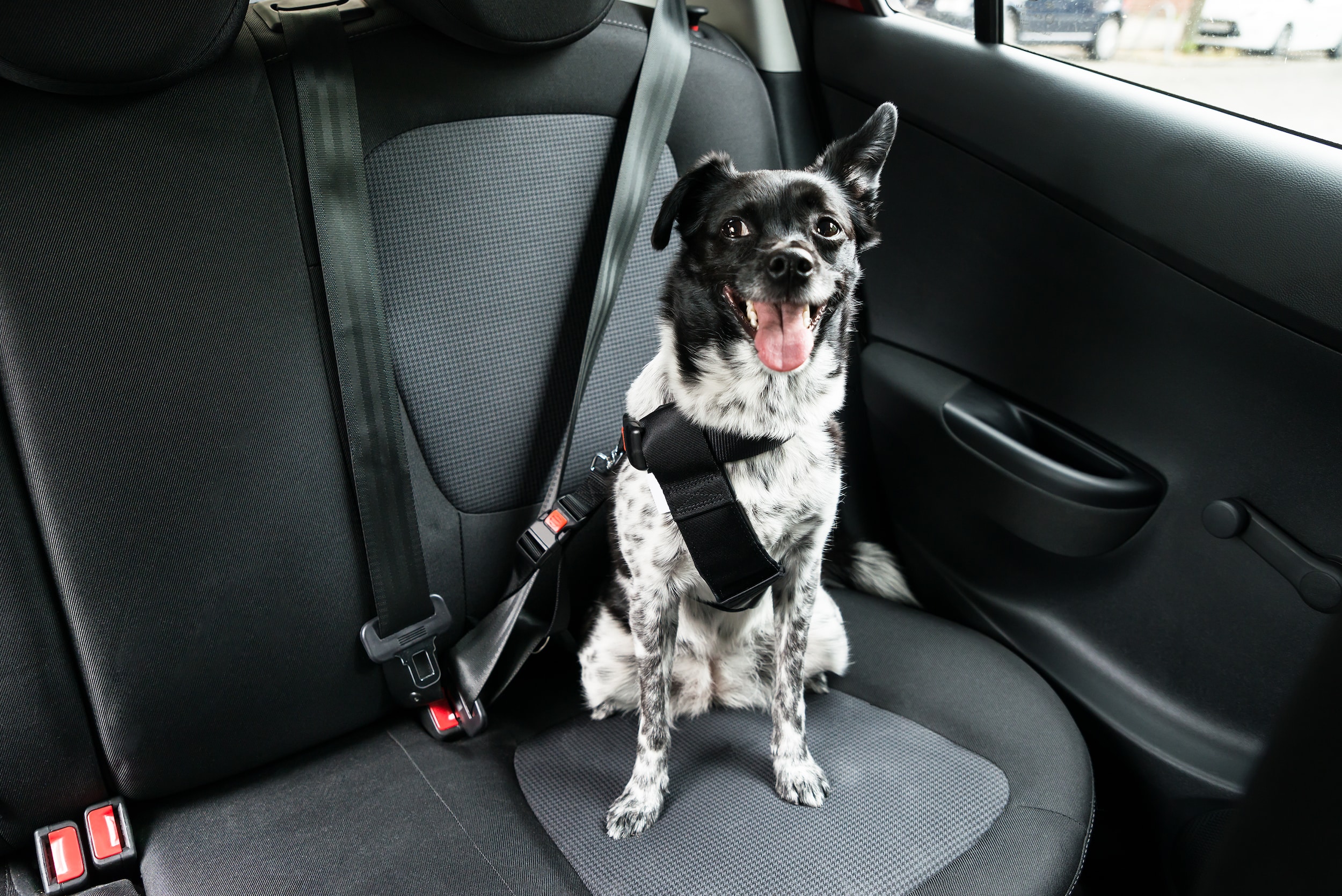
Credit: www.ramseysubaru.net
Introduction To Dog Safety In Suvs
Ensure the safety of your furry friend during car rides by choosing the right spot for them in your SUV. It’s recommended to secure them in the backseat using a harness or crate to avoid distractions while driving and reduce the risk of injury in case of an accident.
When it comes to traveling with our furry friends, their safety should always be a top priority. Whether it’s a short trip to the park or a long road trip, ensuring that your dog is secure and comfortable in your SUV is essential. In this article, we will explore the importance of safe travel for dogs and the challenges that come with transporting them in SUVs.
Importance Of Safe Travel
Safe travel for dogs in SUVs is crucial for their well-being and the overall peace of mind of pet owners. Here are a few reasons why:
- Preventing injuries: Dogs can easily become injured if they are not properly restrained in a moving vehicle. Sudden stops or turns can cause them to be thrown around or collide with objects inside the SUV.
- Minimizing distractions: Unrestrained dogs can be a major distraction for the driver, potentially leading to accidents or near-miss situations. Keeping your dog in a designated area can help maintain focus on the road.
- Reducing stress: Dogs can experience anxiety or stress during car rides, especially if they are not accustomed to traveling. Providing a secure and comfortable space can help alleviate their fears and make the journey more enjoyable for both of you.
Challenges Of Transporting Dogs
Transporting dogs in SUVs comes with its own set of challenges. Understanding these challenges can help you prepare and address them effectively:
- Space limitations: SUVs may offer more room than regular cars, but it’s important to consider the size and breed of your dog. Larger dogs may require more space to stretch out comfortably during the journey.
- Temperature control: SUVs can heat up quickly, especially during warm weather. Ensuring proper ventilation and temperature control inside the vehicle is essential to prevent overheating and discomfort for your furry friend.
- Cargo area safety: If you choose to have your dog in the cargo area of the SUV, securing the area with a barrier or crate is crucial. This prevents your dog from roaming freely and potentially causing damage or injury.
By understanding the importance of safe travel and being aware of the challenges involved in transporting dogs in SUVs, you can take the necessary precautions to ensure a safe and enjoyable journey for both you and your four-legged companion.
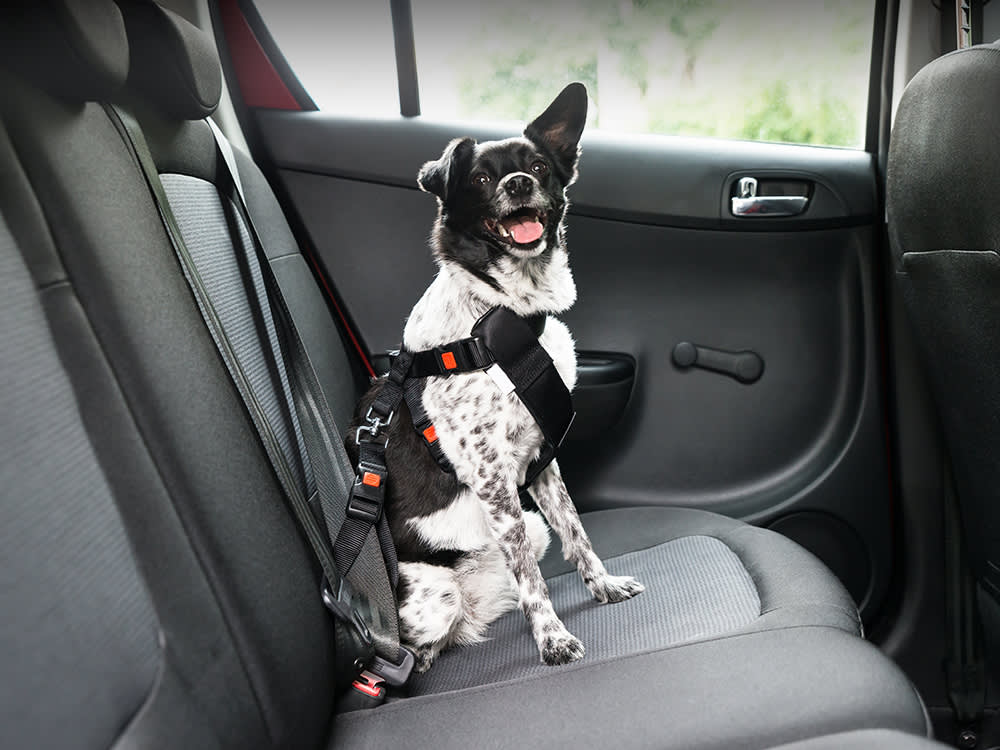
Credit: www.thewildest.com
Assessing Your Suv’s Layout For Dog Travel
When traveling with your furry friend, it’s essential to ensure their safety, comfort, and well-being. One crucial aspect to consider is where your dog should sit in an SUV. Assessing your SUV’s layout for dog travel involves evaluating space considerations and accessibility for pets.
Space Considerations
Before embarking on a journey with your dog in an SUV, it’s important to assess the available space. Measure the dimensions of the cargo area to determine if it can comfortably accommodate your dog. Consider the size and breed of your dog to ensure there’s ample room for them to sit or lie down comfortably. Additionally, factor in space for a pet bed, crate, or barrier if needed.
Accessibility For Pets
Ensuring easy access for your dog is vital for their safety and convenience during travel. Check if the SUV’s rear cargo area can be easily accessed by your dog. Consider the height of the cargo area, the presence of a low entry point, and the ease of jumping in and out for your pet. Installing a ramp or steps can provide assistance for dogs with mobility issues.
Dog Seats And Harnesses: Securing Your Pet
Secure your pet in an SUV with a dog seat or harness to ensure their safety. Consider using a specially designed dog seat or harness that attaches to the seat belt to keep your furry friend comfortable and protected during car rides.
Types Of Dog Seats
When it comes to traveling with your furry friend, ensuring their safety and comfort is essential. One of the most important considerations is where your dog should sit in your SUV. While you may be tempted to let your pet roam free, doing so can put them at risk of injury in the event of an accident. The good news is that there are several types of dog seats available that can help keep your pet safe and secure during car rides. These include:- Booster seats: These are elevated seats that allow your dog to see out of the window while also providing them with a comfortable place to sit.
- Bucket seats: These are designed to fit into the front or back seat of your SUV and provide your dog with a secure and comfortable place to sit.
- Bench seats: These are larger seats that can accommodate multiple dogs or larger breeds.
Choosing The Right Harness
Another option for securing your dog in your SUV is to use a harness. Harnesses are designed to attach to your car’s seat belt and keep your pet from moving around during the ride. When choosing a harness, it’s important to consider factors such as your dog’s size and breed, as well as their comfort level. Some popular harness options include:- Front-clip harnesses: These harnesses attach to the front of your dog’s chest and can provide more control over your pet’s movements.
- Back-clip harnesses: These harnesses attach to the back of your dog’s body and can be a good option for dogs who are prone to pulling.
- Vest harnesses: These harnesses provide extra support and can be a good option for dogs with back or neck problems.
Cargo Area: Pros And Cons For Dogs
When it comes to traveling with your furry friend in an SUV, finding the right spot for them to sit is crucial. One option to consider is the cargo area, which can provide both benefits and drawbacks for your dog. Understanding the pros and cons of this seating arrangement will help you make an informed decision.
Benefits Of Cargo Space
Using the cargo area as a designated spot for your dog during car rides can offer several advantages:
- Ample Space: The cargo area provides a larger area compared to the backseat, allowing your dog to stretch out comfortably.
- Less Distraction: By securing your dog in the cargo area, you can minimize distractions while driving, promoting a safer journey for both you and your pet.
- Easy Cleanup: Dogs can be messy, but the cargo area is typically easier to clean than the interior of the car. You can easily remove any fur, dirt, or accidents without affecting the upholstery.
Safety Precautions
Although the cargo area has its benefits, it’s important to prioritize your dog’s safety. Consider the following precautions:
- Proper Restraints: Ensure your dog is securely restrained within the cargo area using a crate or a specially designed harness. This will prevent your dog from moving around or getting injured during sudden stops or turns.
- Temperature Control: Pay attention to the temperature inside the cargo area. Extreme heat or cold can be dangerous for your dog. Make sure there is adequate ventilation and consider using window shades or covers to regulate the temperature.
- No Loose Objects: Remove any loose objects or items that could pose a threat to your dog. These objects can become projectiles during sudden braking or accidents.
Keep in mind that every dog is different, and their comfort and safety should be your top priority. It’s essential to assess your dog’s behavior and specific needs before deciding on the best seating arrangement in your SUV. By considering the benefits and taking necessary precautions, you can ensure a pleasant and safe journey for both you and your beloved canine companion.
Backseat Travel: Comfort And Safety Tips
When traveling with your dog in an SUV, ensuring their comfort and safety in the backseat is paramount. Here are some essential tips to consider:
Seat Covers And Protectors
Seat covers and protectors can help keep your dog comfortable and protect your car seats from dirt, hair, and scratches. Opt for waterproof covers for easy cleaning and durability.
Barriers And Restraints
Barriers and restraints are crucial for keeping your dog secure during car rides. Consider using a pet barrier to prevent them from moving around and disturbing the driver.
Front Seat Considerations: Is It Ever Safe?
When it comes to traveling in a SUV with your furry friend, it’s essential to consider where your dog should sit. One of the most common questions pet owners ask is whether it’s safe for a dog to sit in the front seat of a SUV. While there’s no definitive answer, there are some potential risks and situations to avoid when it comes to your dog’s seating arrangements.
Potential Risks
There are several potential risks when it comes to allowing your dog to sit in the front seat of a SUV. One of the most significant risks is that your dog could be injured or killed if the airbag deploys during an accident. Airbags are designed for human passengers, and they can cause serious harm to dogs, especially smaller breeds. Additionally, if your dog is sitting in the front seat, they could be more easily distracted, which could lead to accidents or injuries.
Situations To Avoid
There are certain situations that pet owners should avoid when it comes to their dog’s seating arrangements in a SUV. Firstly, you should never allow your dog to sit in the front seat if they are not secured in a crate or harness. This will help to keep your dog safe and prevent them from being thrown around in the event of an accident. Additionally, you should avoid allowing your dog to sit in the front seat if they are prone to anxiety or nervousness, as this could cause them to become distracted and potentially cause an accident.
In conclusion, when it comes to traveling in a SUV with your furry friend, safety should always be a top priority. While it may be tempting to allow your dog to sit in the front seat, there are potential risks and situations to avoid. By taking the necessary precautions and securing your dog in a crate or harness, you can ensure that your furry friend stays safe and comfortable during your travels.
Travel Essentials For Your Dog’s Journey
Ensure a safe and comfortable journey for your dog by providing travel essentials. When traveling in an SUV, the best place for your dog to sit is in the backseat, secured with a harness or crate to prevent any accidents or distractions.
Packing A Doggy Travel Kit
When traveling with your dog, it’s essential to pack a doggy travel kit to ensure their safety and comfort. This kit should include essentials such as a leash, collapsible travel bowls, extra water, food, medications, waste bags, blankets, and comforting toys. Having these items readily accessible will make the journey more enjoyable for both you and your furry companion.
Maintaining Routine And Comfort
Maintaining your dog’s routine and comfort during travel is crucial. Placing your dog in a secure area such as the back seat or cargo area of your SUV with a comfortable travel harness or crate will help minimize distractions and ensure their safety. Additionally, bringing familiar blankets or bedding can provide a sense of security and comfort for your dog during the journey.
Training Your Dog For Suv Rides
Training your dog for SUV rides is essential for their safety and your peace of mind. Proper training will ensure that your furry friend knows where to sit and how to behave during car journeys, making the experience enjoyable for both of you.
Acclimation Techniques
When introducing your dog to the SUV, start by allowing them to explore the vehicle while it’s stationary. Gradually increase the time spent inside, rewarding calm behavior with treats. Repeat this process until your dog feels comfortable and relaxed in the car.
Behavioral Tips For Long Trips
For long trips, it’s important to keep your dog entertained and comfortable. Bring their favorite toys and bedding to create a familiar environment. Additionally, make regular stops to allow your dog to stretch their legs and relieve themselves.
Legal Requirements And Best Practices
When traveling with your furry friend, it is important to ensure their safety in the car. Dogs should never be allowed to roam free inside a car, and this is especially true when it comes to SUVs. In this post, we will discuss legal requirements and best practices for safely transporting your dog in an SUV.
State Laws On Dog Transportation
Before hitting the road with your dog, it is important to research the laws in your state regarding dog transportation. Some states have specific laws that require dogs to be restrained while in a moving vehicle, while others have more general laws that require pets to be transported in a safe manner. In any case, it is always a good idea to err on the side of caution and invest in a good quality dog restraint system for your SUV.
Best Practices For Suv Dog Safety
When it comes to SUV dog safety, there are several best practices that you should follow:
- Use a dog restraint system: As mentioned earlier, investing in a good quality dog restraint system is essential for keeping your dog safe while traveling in your SUV. These systems can include harnesses, crates, and barriers that prevent your dog from moving around too much inside the car.
- Position your dog in the back seat: The safest place for your dog to sit in an SUV is in the back seat. This is because the front airbags in an SUV can be dangerous for dogs if they are deployed in an accident.
- Avoid letting your dog stick their head out of the window: While it may look cute to see your dog with their head out of the window, it is actually very dangerous. Your dog could be hit by debris or other objects while sticking their head out of the window, and they could also accidentally jump out of the car if they are not properly restrained.
- Never leave your dog alone in the car: Leaving your dog alone in an SUV, even for a few minutes, can be dangerous. Your dog could become overheated in the car, or they could accidentally engage the parking brake or other controls while you are away.
- Provide plenty of water and rest stops: Just like humans, dogs need plenty of water and rest stops when traveling in a car. Be sure to bring along plenty of water for your dog, and plan to stop every few hours to allow them to stretch their legs and use the bathroom.
By following these best practices and researching the laws in your state, you can ensure that your furry friend stays safe and comfortable while traveling in your SUV.
Emergency Situations: Preparing For The Unexpected
When driving with your furry friend in an SUV, it’s crucial to consider emergency situations and be prepared for the unexpected.
First Aid For Dogs
Having a basic first aid kit for your dog in the car can be a lifesaver in emergencies.
What To Do In An Accident
In case of an accident, ensure your dog is secure in the car and seek veterinary help promptly.
Conclusion: Ensuring A Safe And Pleasant Suv Experience For Your Dog
Ensure a safe and pleasant SUV experience for your dog by securing them in the back seat with a harness or using a dog crate. This helps to prevent distractions and ensures their safety in case of sudden stops or accidents.
It also allows them to enjoy the ride comfortably without causing any disturbances to the driver.
Key Takeaways
- Choosing the right seating position for your dog in an SUV is crucial for their safety and comfort.
- Consider using a crate, harness, or dog seat belt to secure your furry friend during car rides.
- Placing your dog in the backseat or cargo area of the SUV provides them with more space and minimizes distractions for the driver.
- Ensure proper ventilation and temperature control inside the SUV to keep your dog cool and comfortable.
- Regular breaks and hydration are essential to keep your dog happy and healthy during long journeys.
Continued Learning For Dog Owners
As responsible dog owners, it’s important to continuously educate ourselves on how to provide the best care for our furry companions. Understanding the proper seating arrangements for dogs in an SUV is just one aspect of ensuring their safety and well-being. Here are a few resources and topics to explore further:
- Training your dog for car rides: Help your dog become comfortable with car travel by gradually introducing them to short trips and rewarding positive behavior. Seek professional training assistance if needed.
- Emergency preparedness: Familiarize yourself with pet first aid techniques and create a pet emergency kit to have on hand during road trips.
- Choosing the right vehicle: If you frequently travel with your dog, consider investing in a pet-friendly SUV that offers features such as rear climate control, easy-to-clean interiors, and built-in pet restraints.
- Health and well-being: Regular veterinary check-ups, proper nutrition, exercise, and mental stimulation are vital for your dog’s overall health and happiness.
Remember, every dog is unique, and what works for one may not work for another. Pay attention to your dog’s individual needs and behaviors to ensure a safe and pleasant SUV experience for both of you.
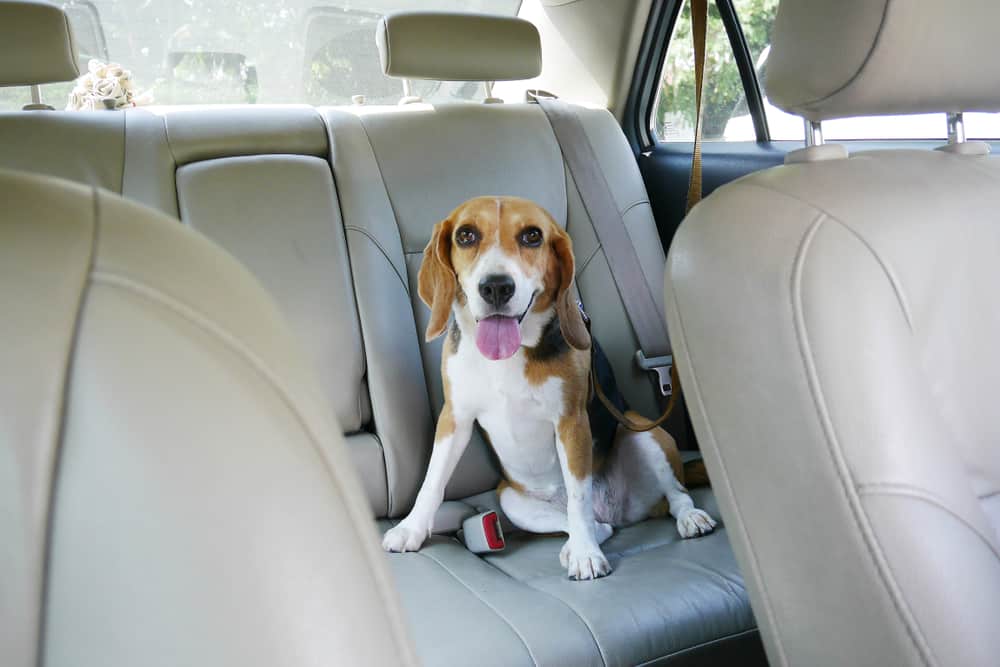
Credit: www.dogingtonpost.com
Frequently Asked Questions
Where Is The Safest Place For A Dog In A Suv?
The safest place for a dog in a SUV is in the back seat or cargo area with a pet seatbelt or secured crate.
How To Travel With A Dog In A Suv?
Secure your dog with a harness or crate. Keep windows closed or use pet barriers. Pack food, water, toys, and a leash for breaks. Make frequent stops for bathroom breaks and exercise.
Is It Safe For A Dog To Ride In The Back Of An Suv?
Yes, it can be safe for a dog to ride in the back of an SUV with proper precautions like securing them.
Where Is The Best Place To Put A Dog In A Car?
The best place to put a dog in a car is in the back seat or cargo area with a pet seat belt or crate for safety.
Conclusion
Ultimately, ensuring your dog’s safety and comfort in an SUV is crucial. By choosing the appropriate spot and using proper restraints, you can make car rides enjoyable for both your furry friend and yourself. Remember, a secure and cozy seating arrangement is key for a stress-free journey with your beloved pet.
- Can I Get in a Taxi Without a Car Seat? - January 26, 2025
- Can I Get Chlamydia From a Toilet Seat? - January 26, 2025
- Can I Get an Uber With a Car Seat? - January 26, 2025

